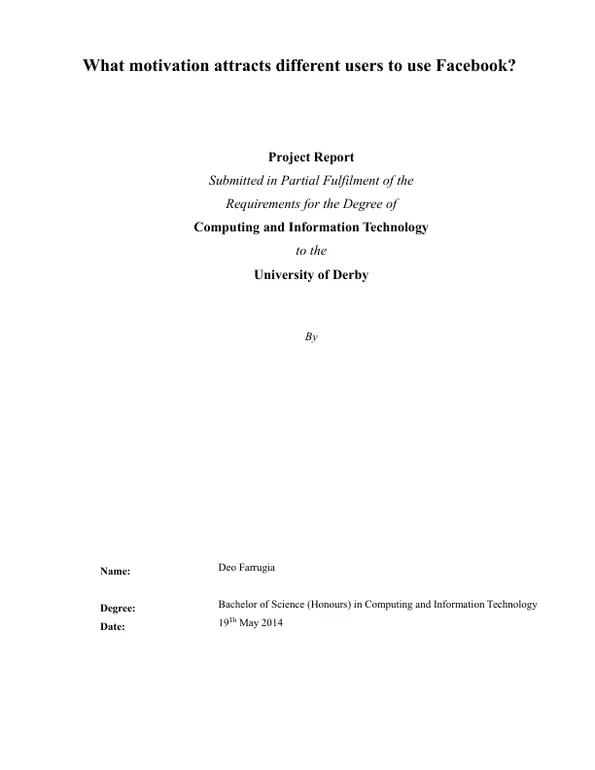Over the last few years social network websites have become a global phenomenon and brought great social impact across the world. Such happenings deserve to be studied and their many aspects investigated thoroughly. The aim of this study was to explore the motives and preferences of users on Facebook. The data was obtained through an online survey on 383 random participants. The result confirmed that Facebook has become a powerful medium of communication. Younger people between ages 14 to 21 are the users who spend more time on Facebook and like to chat with school friends, while age 22 and up chat more with old friends and family members. A sense of security is shown across all ages, gender and education level as in the majority the participants declared that their profile can be only viewed by friends and that they have few unknown friends on Facebook.
Inhaltsverzeichnis (Table of Contents)
- Acknowledgment
- Table of Contents
- List of tables
- List of Figures
- Introduction
- Literature Review
- Social Networks Popularity
- Motivation to use Facebook
- Social Medias differences Different Age Groups and Education levels
- Social Networks Trend Differences between Genders
- Methodology
- Main objectives
- Hypothesis
- Type of Study
- Questionnaire design
- Sample selection
- Data collection
- Statistical Analysis
- Data Analysis
- Demographics
- Descriptive statistic
- Comparative Analysis
- Conclusion
- References
- Appendix A-1
- Descriptive statistics
- Appendix A-2
- Comparison of questions to Age, Gender and Education
- Question 5
- Question 6
- Question 9
- Question 10
- Question 11
- Comparison of questions to Age, Gender and Education
- Appendix A-3
- Survey Questioner
Zielsetzung und Themenschwerpunkte (Objectives and Key Themes)
This study aims to investigate the motives and preferences of Facebook users, exploring why individuals choose to use the platform and how their usage patterns differ across demographics. The study relies on an online survey conducted with 383 random participants to gather data and analyze user behavior.
- Motivations for Facebook usage among different user groups
- Differences in Facebook usage based on age, gender, and education level
- The role of Facebook as a communication tool for various user groups
- The influence of security concerns on Facebook usage
- The evolving nature of social networks and their impact on communication and social interaction.
Zusammenfassung der Kapitel (Chapter Summaries)
The study begins with an introduction, outlining the significance of social networks, particularly Facebook, in the current digital landscape. The literature review delves into existing research on social network popularity, motivations for using Facebook, and the differences in usage patterns based on age, education levels, and gender. The methodology section describes the research design, including the objectives, hypotheses, questionnaire design, sample selection, data collection, and statistical analysis used in the study.
The data analysis section presents the findings from the online survey, focusing on demographic characteristics of the participants and exploring the descriptive statistics and comparative analysis to uncover key patterns in Facebook usage. The chapter concludes with a discussion of the findings and their implications for understanding user behavior on Facebook.
Schlüsselwörter (Keywords)
The study focuses on Facebook usage motivations, user demographics, social networks, online communication, social media trends, survey research, quantitative data analysis, and the impact of digital technologies on social interaction.
- Citation du texte
- Deo Farrugia (Auteur), 2014, User's Motivation For Using Facebook, Munich, GRIN Verlag, https://www.grin.com/document/298721



